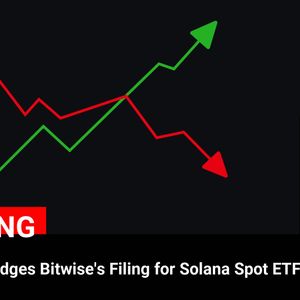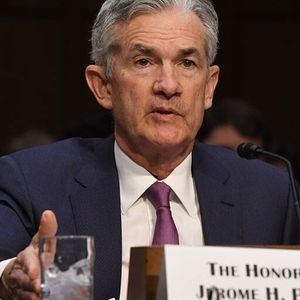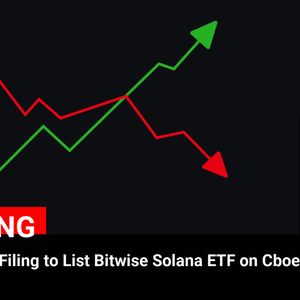The race to expand cryptocurrency investment products in the US continues to gain momentum as asset managers push for the approval of new spot exchange-traded funds (ETFs). Recent filings indicate growing interest in bringing Litecoin (LTC) and Cardano (ADA) ETFs to market, with analysts seeing a strong chance of approval for a Litecoin ETF before year-end. Meanwhile, Grayscale’s bid to launch a Cardano ETF marks its latest effort to expand beyond Bitcoin and Ethereum. NYSE Arca Files for First-Ever Spot Cardano ETF on Behalf of Grayscale NYSE Arca, a subsidiary of the NYSE Group, has filed with the US Securities and Exchange Commission (SEC) to launch a spot Cardano exchange-traded fund (ETF). The filing, submitted on behalf of Grayscale Investments, marks an important step toward introducing Cardano (ADA) to the mainstream financial market. According to the Feb. 10 proposed rule change filing , NYSE Arca is seeking approval to list and trade shares of the Grayscale Cardano Trust, a move that would establish Grayscale’s first standalone investment product for Cardano (ADA). If the SEC grants approval, the spot Cardano ETF would allow investors to gain exposure to ADA without directly holding the asset, simplifying access to Cardano's price movements via traditional brokerage accounts. The filing specifies that Coinbase Custody Trust Company would act as the custodian for the Cardano assets, ensuring secure storage of the holdings, while BNY Mellon Asset Servicing would serve as the fund’s administrator. NYSE Arca emphasized the significance of launching a spot Cardano ETF, arguing that it would ”enhance competition among market participants, to the benefit of investors and the marketplace.” This comes amid growing demand for regulated crypto investment products, particularly following the SEC’s approval of spot Bitcoin ETFs last year. Grayscale’s move also shows the increasing institutional interest in alternative cryptocurrencies beyond Bitcoin and Ethereum. With the growing ecosystem of layer-1 blockchains like Cardano and Solana, asset managers are looking to capitalize on the demand for diversified crypto investment vehicles. This latest filing follows Grayscale’s broader push to expand its suite of crypto ETFs. On Feb. 6, the SEC acknowledged Grayscale’s amended application to convert its Solana Trust into a spot Solana ETF, a move that has sparked significant anticipation within the industry. Bloomberg ETF analyst James Seyffart highlighted the importance of this step, noting that the SEC had previously refused to approve similar filings for Solana-related products. Additionally, on Jan. 30, NYSE Arca filed a 19b-4 form to convert Grayscale’s XRP trust into a spot ETF, showing the firm's continued efforts to broaden its crypto ETF offerings. Grayscale is not alone in its pursuit of expanding the US crypto ETF market. The past few weeks have seen a flurry of filings from major asset managers, all vying for approval of crypto-based ETFs beyond Bitcoin. On Feb. 6, the Cboe BZX Exchange filed applications on behalf of Canary Capital, WisdomTree, 21Shares, and Bitwise to launch the first-ever spot XRP ETFs in the US. On Jan. 28, Cboe BZX Exchange also refiled 19b-4 forms for 21Shares, Bitwise, VanEck, and Canary Capital in an attempt to list Solana ETFs. The increasing number of crypto ETF filings suggests that the industry is gearing up for another wave of mainstream adoption, as investors seek diversified exposure to Ethereum alternatives like Cardano and Solana. Regulatory Uncertainty: Will the SEC Approve? While these filings indicate strong interest in expanding the US crypto ETF market, regulatory hurdles remain a critical challenge. The SEC has historically taken a cautious approach toward approving crypto-based ETFs beyond Bitcoin. However, the approval of multiple spot Bitcoin ETFs in January has paved the way for potential acceptance of additional crypto ETF products. Industry experts believe that the growing institutional demand and regulatory pressure may eventually push the SEC to greenlight Cardano , Solana, and XRP ETFs. Grayscale’s filing for a spot Cardano ETF represents a major milestone in the evolution of crypto investment products. If approved, the Grayscale Cardano Trust could introduce millions of investors to ADA exposure in a fully regulated environment, solidifying Cardano’s presence in traditional finance. As competition among asset managers heats up, the coming months will be crucial in determining whether the SEC embraces a broader crypto ETF landscape or continues its historically cautious stance. With multiple filings already in the pipeline, all eyes are now on regulators and their next move in shaping the future of crypto ETFs in the United States. Litecoin ETF on Track for SEC Approval With 90% Chance, Bloomberg Analysts Say In related news, the US SEC is likely to approve a spot Litecoin ETF before the end of the year, according to Bloomberg ETF analysts James Seyffart and Eric Balchunas. The duo places the odds of approval at 90%, significantly higher than those for other cryptocurrencies like XRP (65%), Solana (70%), and Dogecoin (75%). With the ETF market rapidly expanding beyond Bitcoin and Ethereum, Litecoin’s proof-of-work (PoW) mechanism and established reputation as a faster alternative to Bitcoin appear to be working in its favor. According to Seyffart and Balchunas, Litecoin’s chances of SEC approval are stronger due to regulatory precedents. Unlike XRP and Solana, which are still entangled in ongoing regulatory questions, Litecoin has already had its S-1 and 19b-4 forms filed and acknowledged by the SEC. Moreover, the SEC is likely to classify Litecoin as a commodity, much like Bitcoin, rather than a security. The SEC’s previous resistance to altcoin ETFs stemmed largely from concerns about their classification as securities under the Howey Test. However, Litecoin, given its PoW consensus and lack of an initial token sale, faces fewer hurdles in this regard. Posting on X, the analysts noted that Litecoin’s ETF approval process appears to be the most straightforward, making it a strong contender for becoming the next SEC-approved cryptocurrency ETF. The increasing demand for regulated crypto investment products has driven interest in ETFs beyond Bitcoin and Ethereum. Since their launch in January and July 2024, respectively, spot Bitcoin and Ethereum ETFs have accumulated $40.7 billion and $3.18 billion in net inflows, according to data from Farside Investors. While a Litecoin ETF may not generate the same level of demand, Seyffart believes it could still be a viable product for investment firms, even with relatively modest inflows. ”They don’t have to hit it out of the park on a flows basis to be worthwhile from an issuer perspective,” Seyffart said. This aligns with the broader trend of institutional adoption of crypto ETFs, as asset managers seek diversified investment products to cater to a growing market. The SEC's final decision on Litecoin’s ETF application—along with applications for Solana, XRP, and Dogecoin ETFs—is expected between Oct. 2 and Oct. 18. However, Seyffart speculates that Litecoin’s ETF could launch even before this window if the process remains on track. In contrast, ETFs for Hedera (HBAR) and Polkadot (DOT), which have been filed by Canary Capital and 21Shares, are still awaiting official approval odds from analysts. The race to list crypto-based ETFs is far from over. Seyffart anticipates a wave of new filings from ETF issuers, likening the approach to a ”spaghetti cannon”—where issuers throw multiple ETF applications at the SEC and see which ones gain traction. ”Issuers will try to launch many, many different things and see what sticks,” Seyffart said. This suggests that investors could soon see a broad range of crypto ETFs, covering multiple digital assets. However, as demand and interest fluctuate, some ETFs may struggle to attract sufficient liquidity and could be forced to liquidate if they fail to gain traction. While Litecoin’s path to ETF approval appears relatively smooth, regulatory uncertainty continues to plague XRP and Solana ETFs. For XRP, the ongoing legal battle between Ripple and the SEC remains a major roadblock. Although a court ruling found that XRP isn’t a security when sold on secondary markets, the SEC has appealed the decision, arguing that Ripple violated securities laws in its initial offering. The lawsuit, initiated under Gary Gensler’s SEC leadership, is now under review by acting SEC Chair Mark Uyeda, who could choose to withdraw the case. For Solana, Seyffart previously stated that its security status needs to be resolved before the SEC can consider it under a ”commodities ETF wrapper.” This means that regulatory clarity will be crucial before a spot Solana ETF gains serious traction. Trump’s Election Win Boosts Crypto ETF Odds Interestingly, the odds of ETF approvals for Solana, XRP, and Dogecoin were below 5% before Donald Trump won the US presidential election on Nov. 5, 2024. Since then, the market has seen a notable shift in sentiment and optimism toward regulatory approval. Trump’s pro-crypto stance and potential changes in SEC leadership could accelerate the approval process for a broader range of digital asset ETFs. This shift in political dynamics is likely to influence how the SEC handles crypto-related regulations moving forward. With Bloomberg analysts betting on a 90% approval rate, Litecoin could soon become the third cryptocurrency to have a spot ETF in the US. If approved, it would pave the way for other altcoin ETFs, depending on how regulatory frameworks evolve in the coming months. The SEC’s final decision window between Oct. 2-18 will be a critical moment for the industry, determining whether Litecoin cements its position alongside Bitcoin and Ethereum in the ETF space. Meanwhile, the growing institutional demand, shifting regulatory landscape, and the upcoming US presidential administration will continue to shape the future of crypto ETFs in the United States. With more filings expected in the coming months, crypto ETFs are set to become a dominant force in traditional finance—bringing digital assets further into mainstream investment portfolios.














